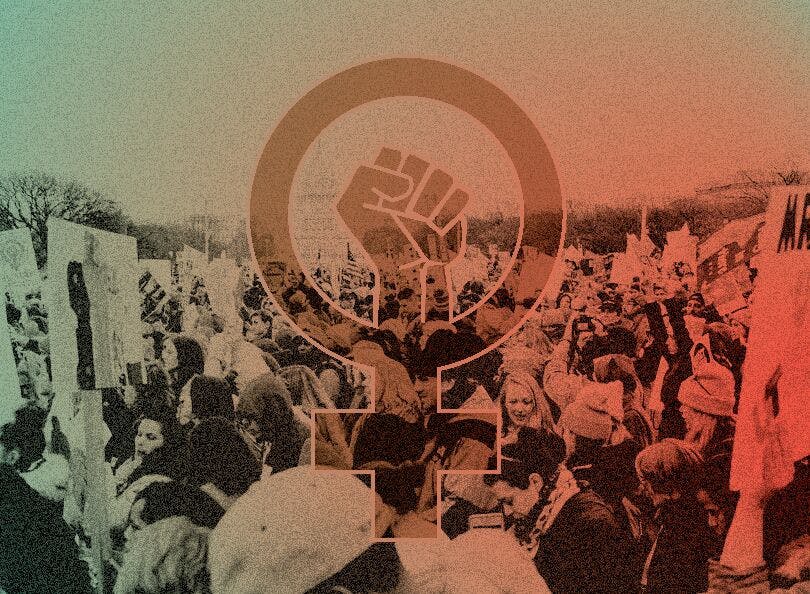
Jean Chalmers wouldn’t say her age.
“It’s intrusive, and it serves no purpose,” she said.
She doesn’t want her words to be disregarded or their importance diminished, and labeling women with their age does just that, she said.
As a former president of Gainesville Women for Equal Rights, an organization of women that worked to improve the quality of life of Black people in Gainesville from 1963-2001, Chalmers has tried to elevate the voices of the oppressed. Chalmers shared her perspective on how much has changed in the U.S. and Gainesville since she worked with GWER and her opinion on activism today.
Chalmers arrived in Gainesville from New York City during the 1960s and said she had never witnessed segregation before. In an interview for the Samuel Proctor Oral History Program, she said the moment that moved her to take action was on a rainy day as she walked down Southwest First Street. She came upon an elderly Black couple, who stepped off the sidewalk into ankle-deep water to allow her, a young white woman, to pass. Black people had separate libraries at the time, couldn’t use the same laundromats and had to use the back door when they went to the hospital.
Integration in Gainesville was late, said Professor Steven Noll, who teaches Florida history at UF. It didn’t happen until 1970. It wasn’t violent, but it wasn’t a smooth transition, either. There were a lot of people who couldn’t accept that society was going to be different, Noll said.
“The women’s rights movement and the movement for civil rights in Gainesville went together,” Noll said.
GWER was the main force behind the desegregation of Alachua General Hospital, the Alachua County libraries and other institutions in Gainesville. The organization was involved in protests, actively registered Black people to vote and started programs like Best Day of the Week, an effort to prove that Black and white children were equally smart and talented by giving children opportunities to participate in the same school subjects together.
But even today, Chalmers said she still sees segregation in the city. As a realtor, she’s noticed that the East side of town is mostly inhabited by Black people, and the West side is mainly white.
According to a study by UF Bureau of Economic and Business Research, Black residents in Gainesville reside in the poorest quality and lowest property valued homes in the city. The study also said a large number of minorities, who have lower education and purchase cheaper homes, live on the East side of Gainesville, which is separated by Main Street.
“But it’s a little more complex than that,” she said.
Old Black communities do not want to fall victim to gentrification or be turned into student housing, Chalmers said. There are poverty issues at play as well, which cause most of the city’s poor people to live on the East side. According to the 2016 census, 19.8 percent of people live in poverty in Alachua County.
“I think the income gap is the cause of most of the stuff that we’re dealing with,” she said.
However, Gainesville has come a long way from the way things used to be, Chalmers said. She reflected that you can’t get arrested for sitting at a lunch counter with a Black person anymore. But there’s more to be done. At the time of GWER, they couldn’t even approach the idea of reparations for slave labor because it was too controversial at the time.
“But we knew that the whole darn country had been built on slave labor,” she said.
Now she’s glad to see the country explore some of these ideas and recognize the injustices perpetuated for so long by slavery. Chalmers said she thinks the next generation is really stepping up and is pleased to see so many young white people protesting in the streets alongside Black classmates and friends. She hopes they’ll get organized, study, lobby and be political.
“What happens in the ballot box is what’s really important. That’s much more important than what happens in the street,” Chalmers said.
One thing she suggests for young activists is to go door-to-door and help people register to vote. When she was active in GWER, she said they had a walking map and rang every single doorbell in the majority Black part of town.
She also thinks young activists need to be thoughtful about tearing down and destroying statues and monuments. The statues that are being torn down are a part of U.S. history, and she thinks we’ll eventually regret destroying it. She compared it to the British destroying cultures when they colonized countries.
“Get it off any place where it’s to be honored, but keep it someplace where it can be studied,” she said.
Chalmers loves museums, and suggests there be a museum that chronicles the history of the Civil War, similar to the Holocaust Museum. The old statues of Confederate generals should be placed in there, along with the stories they tell.
“I think if we had a museum on the Confederate war,” she said, “We would say we don’t ever want this country divided.”




